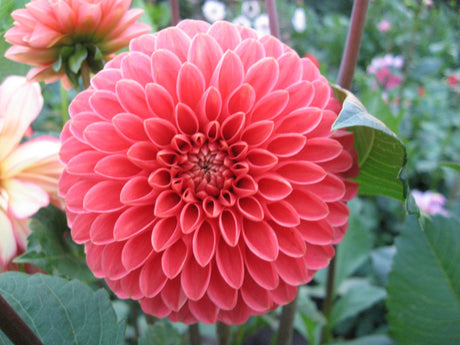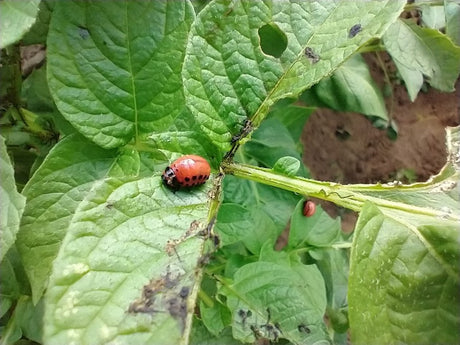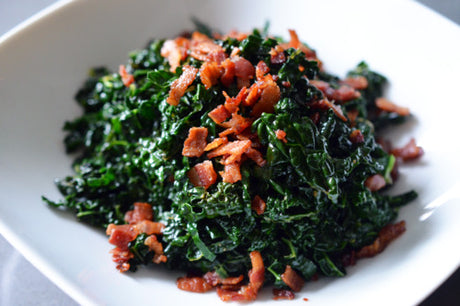Table of Contents:
If you're one of the hundreds of thousands of people in the Low Countries who grows their own vegetables in a vegetable garden, chances are you grow tomatoes. Nine out of ten vegetable gardeners grow tomatoes, either in a greenhouse or a greenhouse, or simply outdoors in the ground. And if you let a lot of people taste the difference between a supermarket tomato and a homegrown one, then every household undoubtedly grows its own tomatoes.
Growing tomatoes isn't always sunshine and roses. Many tomato growers become discouraged, sad, or angry when the crop doesn't always go as planned. Soon, social media groups will be filled with tomato-growing problems. Your tomatoes might not produce fruit, they might not ripen, or your leaves might develop unwanted black spots. In this article, I'll try to provide an overview of the problems you might encounter as a hobby tomato grower. However, some problems seem more serious than they actually are and can often be easily solved.
Welcome to the world of tomato problems. Publishing this list of 22 common tomato problems would be rather sadistic, but I always try to include the reason and the solution.
A rich soil is where we start if we want our tomato plants to flourish and ultimately reap the rewards of our labor. Make sure your tomatoes are in the sun, because just like us, they love warmth and that wonderful light that nourishes us. Water them with love and patience—regularly, but without drowning them, because too much of a good thing makes our green friends susceptible to mold and unwanted guests. Feed the soil in which they grow with nutritious soil and give them the fertilizer they need to grow and thrive. Check on them weekly, like you would visit good friends—look for signs of disease or pests, so you can act immediately if something's amiss. By investing your hands in such a healthy growing environment and giving your tomato plants the attention they deserve, you'll prevent common problems and soon be able to enjoy those deliciously juicy, flavorful tomatoes from your own garden—the pure joy of growing what you yourself have grown.
Conditions that can cause tomato diseases and pests
We all know how vulnerable our beloved tomato plants can be to all sorts of nasty diseases and pests, especially when we don't provide them with the ideal growing conditions they deserve. Damp soil, high temperatures, and a lack of fresh air circulation—these are precisely the conditions fungi like Phytophthora infestans are waiting for to infest our tomato plants with that dreaded tomato blight. Giving our plants too little sunlight or planting them too close together also makes things very easy for these fungi and pests. And then there are those pesky insects like whiteflies and aphids, which particularly target our tomato plants when they're under stress or forced to survive in an overly humid environment. But don't worry—by paying close attention to these growing conditions and intervening promptly, we can all prevent our tomato plants from falling victim to fungi, insects, and other unwanted visitors.
How to Identify Tomato Problems and Diseases?
Before you look at the list of tomato pests and diseases, it's important to know how to recognize them. This makes it easier to ask for help. Try the following steps when you want to detect problems:
- Identify the affected part of your tomato plant, is it the tomato itself, the leaves, the stem, the flowers, or is it the roots of your plant that are showing defects?
- Note the differences between the problem plant and healthy plants. For example, if your healthy plants have healthy, fluffy green leaves and your sick plant has brown or black spots, holes, curled edges, or a white cast, make a note of this before requesting assistance.
- Check if any insects are present on your plants. To identify the insects, take a photo and seek help. Also, keep a close eye out for pest eggs, as these are often laid on the undersides of leaves. By identifying eggs early, you can intervene more quickly and prevent further spread.
Armed with these tips, you can now easily sort through your tomato problems and find the one that's causing your problem. Ideally, you're reading this article for informational purposes only, and your tomato plants will thrive.
22 common tomato problems
The list is divided into two sections: 16 diseases caused by improper propagation, bacteria, or fungi. Then you'll find 5 problems caused by insect pests. Some diseases or pests can affect the entire plant, making it important to be vigilant. Hopefully, you'll discover some tips that will save your tomatoes this year or improve your crop next year.
16 Tomato Diseases That Can Spoil Your Fun
When I started writing this article, I got home, checked my tunnel greenhouse , and noticed two Coeur de Boeuf tomato plants with a total of five tomatoes suffering from blossom end rot. How cynical nature can be! In the meantime, I quickly looked up what I could do about it and did what was necessary... I hope. Tomato diseases, garden fungi, or other circumstances can quickly shatter your tomato dreams. Often, you can save your plants with a little extra love and attention, but in some circumstances, you really need to intervene and remove them. Before we go through the list of doom and gloom, I'll briefly list the main causes of diseases.
- Insufficient nutrition : Use sufficient liquid fruit crop fertilizer for your tomatoes.
- Over-pruning : Train your tomatoes well so there's always a canopy that provides sufficient protection from the sun. I grow on cultivation twine with tomato clips , and it works wonders.
- Calcium deficiency : Test your soil and add calcium if needed. It's best to do this for the onion plant. I use the same seaweed lime I also use in the charcoal bed.
- Planting when temperatures are not yet ideal : try to be patient until no more frost is forecast and the nights become warmer.
- Water... too much or too little : Choose a watering strategy that suits the weather at that time.
- Watering from above or with a lot of splashing is advertising for fungal diseases : Water at the base of your plants
- Insufficient air circulation around your plants : Plant your tomatoes far enough apart and prune leaves as needed, but not excessively (see above). Use a fungicide if you notice powdery mildew.

Phytophthora: spots on tomato plant stem

Phytophthora: affected leaves
1. Phytophthora infestans
- What does it look like ? You'll see discoloration (black spots) starting on the leaves, then spreading to the stem and, in severe cases, even visible on the fruit. The spots are initially inconspicuous, but the fungus quickly takes over and your plant eventually dies.
- What is the cause of Phytophthora, also known as potato or tomato blight ? There is insufficient air circulation between your plants: moisture and warmth form the ideal basis for fungal diseases.
-
What can you do about it:
- Preventive
- Respect the planting distances and ensure optimal air circulation
- Keep your plants tidy: check indeterminate varieties for suckers. Prune leaves as needed. Cut off leaves that are touching; you can cut off entire leaves or halve them. Overlapping leaves can't dry properly and thus create a potential breeding ground.
- Don't plant tomato plants next to potato plants. This prevents the fungus from spreading from one plant to the other.
- Treat your plants with lava flour , especially in places where you've removed suckers or cut off leaves. Those small wounds can be a gateway for fungus.
- If heavy rainfall is followed by a period of abundant sunshine, you know a lot of water is evaporating from beneath your plant. Even if the disease isn't yet visible, be sure to treat it preventatively with BSI Ecopur Lecithin (organic) or Cuprex Garden .
- Are your plants affected:
- Leaves only: remove affected leaves as soon as possible and treat with BSI Ecopur Lecithin or Cuprex Garden.
- Remove your plants from your vegetable garden. Never compost diseased leaves or plants; winter isn't harsh enough to kill all fungal spores. Don't plant tomatoes in the same spot in the same vegetable garden year without treating them first, as the fungal spores will infect your new plants as well.
- TIP: Always treat dry plants to prevent further spreading of mold spores.
- Preventive

Blossom end rot due to calcium deficiency, drought
2. Nose rot
- What it looks like : Your tomato starts off well and looks very healthy. But when it starts to ripen, you'll notice a nasty, dark spot on the bottom. The spot feels leathery, and even if you cut it away, the inside of the tomato is completely unsatisfactory.
- What causes blossom-end rot ? Your plant has a calcium deficiency. This doesn't necessarily mean there's too little calcium in your soil. If the acidity of your soil is too high or too low, your tomato plant can't absorb the calcium, even if it's chock-full of calcium. You can use a pH meter to determine the acidity of your soil. A pH of 6.5 is ideal for tomatoes. Irregular watering can also cause blossom-end rot. At some point, your fruits will quickly fill with water. If there's a lack of water at that point, or if there's an interruption in watering, your tomatoes will protest with blossom-end rot. Hot, warm days without water, and you can be sure you'll develop blossom-end rot.
-
What can you do about it:
- Before you start growing: When you plant out, your soil should be ready for a large tomato harvest. Besides tomato fertilizer with a good dose of NPK ( nitrogen , phosphorus , and potassium ) and magnesium sulfate (magnesium), you should also give your growing medium a good dose of seaweed lime . You can also crush your eggshells and mix them into your compost; this will also provide your plants with a good dose of calcium.
- During cultivation: In dry weather, you can, of course, keep your plants well-hydrated. If there's a calcium deficiency, you can use a foliar spray containing calcium. This foliar spray can be absorbed very quickly and protect the rest of your tomatoes from blossom-end rot.
- Don't harvest tomatoes with blossom-end rot if they aren't moldy or overripe. Don't harvest green tomatoes with blossom-end rot until your plant is healthy again and has absorbed sufficient moisture or calcium. When you harvest green tomatoes with blossom-end rot, there's a risk that the plant will start to attack your next vine. So, be sure to wait a while before harvesting tomatoes with blossom-end rot.

Blossom drop
3. Your flowers on your tomato plants are falling off or the English term 'blossom drop'
- What does it look like: Very simple, you get flowers on your tomato plants but during their further development they break off or do not develop fruits.
- What causes this? Large temperature fluctuations cause this annoying phenomenon. It's typical when plants with flowers are planted out too early and shiver at night, while they endure temperatures of 40°C during the day under glass. Tomato plants require a minimum of 12 degrees Celsius at night. Other causes of blossom drop include insect pests, insufficient water, too much or too little nitrogen, or a lack of pollination.
- What to do: You can't change the weather, but you can sow a little later (early to mid-March) so you can keep the plants indoors longer at night. If you start in February, your plants will have outgrown their p9 pots and will need to be in the open (cold) ground. Also, keep your soil well-fertilized with liquid fertilizer for fruit crops , encourage pollination by tapping the stems of your plants weekly, or attract bees. You can control insects with an organic product containing pyrethrum.

4. Cracks in your tomatoes
- What do they look like? You often see the cracks on the crown of your tomatoes. Insects sometimes use these cracks to enter your fruit. Birds are also attracted by the pleasant scent the cracks give off.
- What causes the cracks : Hot, humid weather. After a dry spell, your tomatoes are very thirsty. If it suddenly rains heavily or if you have a dry spell in your If you give your greenhouse or conservatory a lot of water, your fruit will swell very quickly and cracks will appear in your fruit.
- What to do : Even though you can't stop or encourage rain outside, try to water evenly throughout the growing season. This prevents your tomatoes from getting too much water at once. Also, keep an eye on the weather forecast. If you see rain coming, keep your watering can in the shed for a while. In a conservatory or greenhouse, you obviously have more control.

5. Sunburn on your tomatoes
- What does sunburn look like? The plant looks perfectly healthy, and the fruit is developing normally. But as the tomatoes ripen, yellow spots appear on their skin. The yellow spots fade to a whitish color, and the skin becomes paper-thin. This gives the tomatoes a bland appearance and a bland flavor.
- Why sunburn: The name already gives it away a bit, the sun's rays have literally burned your tomatoes.
-
What can you do about it:
- You can provide your tomatoes with natural shade using the leaves of the plant itself or the leaves of a neighboring plant. Sunburn often occurs in very light-transmitting glass greenhouses or conservatories where extensive pruning has taken place.
- You can choose to grow in a tunnel greenhouse with slightly less translucent film. Splendid and Elegant plants rarely suffer from sunburn because the sun's rays are refracted.
- If you have a glass conservatory or greenhouse and want to prune a significant amount of leaves, you can consider applying a sun-resistant paint to your glass. Temperzon is a product that creates a milky layer on your glass, achieving the same effect as the tunnel film used on Splendid and Elegant greenhouses. It refracts the sun's rays, preventing sunburn.










